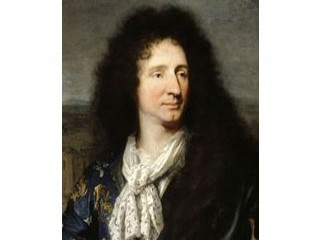
Jules Hardouin Mansart biography
Date of birth : 1646-04-16
Date of death : 1708-05-11
Birthplace : Paris, France
Nationality : French
Category : Arhitecture and Engineering
Last modified : 2011-08-24
Credited as : Architect, French Baroque architecture, château of Clagny
The French architect Jules Hardouin Mansart consolidated the many classical tendencies of his predecessors and produced architectural monuments of an impressive grandeur rare in the annals of art.
The talents of Jules Hardouin Mansart were perfectly suited to the principal task to which they were assigned, namely, the glorification of absolutism centering in the person of Louis XIV. Like the monarch he so enthusiastically served, the architect had dreams of considerable magnitude. His grandiose conceptions and their subsequent execution were made possible by unparalleled financial backing.
Born Jules Hardouin in April 1646 in Paris, he was the son of a painter and the grandnephew of Francois Mansart, with whom he studied architecture and whose family name he later adopted. His further training was under Liberal Bruant. Though J. H. Mansart did not study with Louis Le Vau, this master's style had a very formative influence on him.
Mansart's earliest royal commission appears to have been the rebuilding in 1674 of the small Château du Val at Saint-Germain-en-Laye. Here, and in the Hotel de Noailles in the same town, he introduced a new type of domestic structure: the single-storied building with a strong horizontal emphasis-which he revived in his Grand Trianon at Versailles (1689). The Saint-Germain houses, as well as his contemporaneous Hotel de Lorge in Paris, conveyed a new interest in convenience of plan; the rooms were often of a variety of shapes and so disposed at the Château du Val as to be heated simultaneously by a single, carefully placed heating unit.
The Château of Clagny (1676-1683), built to house the natural children of Louis XIV by the Marquise de Montespan, was Mansart's first large structure commissioned by the King. The monumental scale of its simple masses and the inherent understanding of the proper use of classical motifs reveal the architect's knowledge of Francois Mansart's Gaston d'Orleans wing at Blois and his later château of Maisons (now Maisons-Lafitte).
J. H. Mansart's rise to fame became meteoric when, in 1678, Louis XIV charged him with the vast modifications and additions to the château of Versailles. He first reworked Le Vau's garden facade, filling in the large terrace set into the middle of the building's second story, in order to create the Galerie des Glaces. Later Mansart erected the great wings which extend symmetrically north and south of the central block, creating in the overall 1,800-foot length an unparalleled monumentality. Among his most imaginative efforts at Versailles were the splendid horseshoe-shaped stables (1679-1686), which were carefully planned to fill in the wedge-shaped areas formed by the avenues radiating out from the château's forecourt. Equally notable is his work on the second Orangery, with its magnificently scaled embracing staircases. His last undertaking at Versailles was the chapel (conceived 1688; built 1697-1710).
Mansart was responsible for two significant urban projects in Paris: the Place des Victoires and the Place Vendome. Both squares, designed to provide handsome settings for equestrian statues of Louis XIV, were surrounded by monumentally scaled architecture suggestive of pure scenography. Though the round Place des Victoires has since been so modified as to obscure its original majestic appearance, the Place Vendome, with its noble arcades surmounted by giant orders and beautifully proportioned pediments, is one of Mansart's most impressive achievements.
The architect's crowning glory was his church of Les Invalides, the Dome (1680-1706). The structure is Greek cross in plan with circular chapels located in the corners, following the projected arrangement of the Bourbon chapel at Saint-Denis by Francois Mansart. The building is surmounted by a high dome which derives from earlier domical structures, such as St. Peter's in Rome and, in Paris, the church of the Sorbonne by Jacques Lemercier and the Collège des Quatre Nations by Le Vau. J. H. Mansart carefully adjusted his building to Bruant's earlier adjacent church in order to achieve a pleasing visual and physical unity between the two structures. The great height of the dome was determined by its relation to Bruant's broad facade of the Hotel des Invalides as it was to be viewed from a position near the Seine. From this point, the dome is perfectly proportioned to the extended facade and provides a splendid sense of visual focus toward the center of the complex.
Beginning in 1679 and continuing to the time of his death, Mansart was occupied at Marly-le-Roi, building a novel weekend retreat for Louis XIV. In the perfectly balanced layout of the entire complex, the building reserved for the King's exclusive use stood as an isolated block, bounded on its flanks by individual pavilions designed to accommodate those members of the court who were invited to spend several days at Marly. The arrangement suggests a new intimacy in French architecture and can also be regarded as symbolic, for the central building is the dwelling of the Sun king and the pavilions are his satellites.
When Mansart died at Marly on May 11, 1708, there was no other architect of his stature to take his place. He had been perfectly suited to the needs of the age, and owing to his aggressive and, it is said, often ruthless methods and his remarkable ability to command myriad teams of underlings, he was able to realize the grand schemes devoted to glorifying the absolute monarchy of Louis XIV.

















